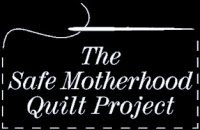 When used appropriately, cesarean section can be lifesaving, and I am grateful for the skilled obstetricians that perform this surgery. However, the national c-section rate has increased by 50% since 1996, and is now 31.8%, more than double the World Health Organization maximum recommended rate of 15%. Florida’s numbers are even higher, and here at Sarasota Memorial Hospital (SMH), that rate is 44%--almost triple the WHO recommendation. It is time to reverse this dangerous trend.
When used appropriately, cesarean section can be lifesaving, and I am grateful for the skilled obstetricians that perform this surgery. However, the national c-section rate has increased by 50% since 1996, and is now 31.8%, more than double the World Health Organization maximum recommended rate of 15%. Florida’s numbers are even higher, and here at Sarasota Memorial Hospital (SMH), that rate is 44%--almost triple the WHO recommendation. It is time to reverse this dangerous trend.The risks associated with cesareans far outweigh those associated with vaginal birth, and rise exponentially with each repeat surgery. For mothers, these risks include hemorrhage, blood clotting, scar adhesion (which increases risk for future pregnancies and gynecological problems), and increased maternal death. Babies born by c-section are less likely to breastfeed, more likely to sustain respiratory damage, and twice as likely to die during infancy . Studies attribute the increases in severe maternal complications and premature birth to climbing c-section rates.
This trend is having a significant economic impact as well. On average, a cesarean costs twice as much as a vaginal delivery. With Medicaid currently covering half of all Florida births, our taxpayers are paying for this increase. Additionally, mothers with prior c-sections are more frequently being denied insurance coverage. This creates a burden for families who have to pay for future maternity care, including birth, from their own pockets.
‘Maternal request’ is not to blame. National data reveals that 98% of women with primary cesareans believed there was a medical reason for their surgery. Instead, the largest percentage of c-sections—over one third—are performed under the diagnosis ‘prior cesarean section.’ Women are still being told ‘once a c-section, always a c-section,’ though studies show that Vaginal Births After Cesarean (VBACs) are as safe or safer than repeat cesareans.
In a recent editorial, SMH maternal-fetal medical director Dr. Washington C. Hill, M.D., FACOG, recommended that VBACs be performed in the hospital, with “obstetricians who are supportive of VBAC delivery and of the pregnant woman's desire and right to deliver vaginally.” These obstetricians, however, are hard to come by. Of approximately 3,300 births in Sarasota hospitals in 2007, only 7 were VBACs. The tax-funded Health Department denies women VBACs and requires repeat c-sections. Although 3 out of 4 women who attempt VBAC with supportive caregivers are successful , they are allowed in less than half of Florida hospitals, and fewer than 1% of Florida obstetricians will accept a new patient requesting a VBAC .
The rising c-section rate is a women’s health crisis; however, safe and proven ways of reducing these rates do exist. By implementing evidence based modules (such as the Midwives Model of Care and the Mother Friendly Childbirth Initiative), encouraging spontaneous labor and minimizing technological interventions, we can make a concerted effort at achieving healthy birth statistics. This effort must include increased support for women seeking VBACs, from both the provider and the institutional level.
The upcoming expansion of SMH includes many new labor and delivery rooms; the chance to reduce the cesarean rate begins there. SMH has an excellent reputation for emergency care services. I urge the same standard for support of normal birth. By reducing our c-section rates, Sarasota has the opportunity to display the will and leadership needed to provide evidence-based maternity care, thereby improving birth outcomes and saving taxpayers money.




















I'm really shocked at the c-section rate here in Sarasota. . . 44%?!
ReplyDeleteThen again, I think of many of the moms I've known and how many have had c-sections -- and like the editorial pointed out, how many are told and taught that they "must" have a c-section because their first birth (usually poorly managed) was a c-section.
I am thinking of having another child but after my last(first) child who is now 3, I would really like to have a VBAC, but my doc says I need to have a repeat section, because of my first section. He told me they don't do VBAC's becasue if something happens it will be catastrophic. I was frustrated because I felt that was a crock! I love my ob and he has been my car provider for 10 years so I am comfortable with him. Although I am determined to VBAC. After my section I had postpartum depression, and tried hard to breast feed and could not, I was so disappointed in my whole experience, I want to do it again the natural way this time. So please if anyone has any info on who will VBAC in sarasota, I would love to know.
ReplyDeleteThanks
Anonymous: thank you so much for your comment. If you would please follow the link to email me, I can give you some names of both midwives and OB's in Sarasota who will screen you for potential VBAC. I am in the process, ironically, of putting together a post on how to have a VBAC in Sarasota...watch for that as well.
ReplyDelete